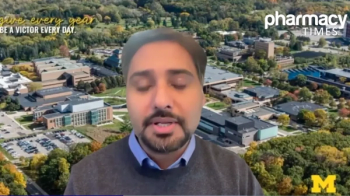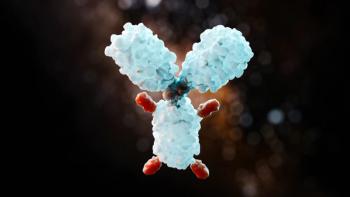
Novel AI Model Optimizes Cancer Treatment to Lessen Toxicity
Machine-learning technique reduces toxic treatment dosing for glioblastoma while maintaining tumor-shrinking benefits.
Artificial intelligence (AI)-powered technologies are reshaping the health care landscape, with breakthrough applications that could significantly enhance patient care.
A new novel machine-learning technique has shown promise in making cancer treatment less toxic while maintaining similar efficacy, according to a recently-published study. By allowing patients to reduce toxic chemotherapy and radiotherapy dosing, the new tool could improve patients’ quality of life and reduce debilitating adverse effects, the study authors said.
The machine-learning model examines treatment regimens currently in use and iteratively adjusts the doses to find the most optimized treatment plan that will still reduce tumor sizes. The model uses a technique called reinforced learning (RL), in which it learns to favor certain behavior that leads to a desired outcome, the researchers noted.
The researchers employed the technique to design treatment plans for patients with glioblastoma, an aggressive form of brain cancer that generally requires use of multiple medications. In a simulated trial of 50 patients, the researchers adapted an RL model for treatments of the brain cancer that use temozolomide (TMZ) and procarbazine, lomustine, and vincristine, administered over weeks or months.
The model adjusted treatment cycles that reduced the potency to a quarter or half of nearly all doses while maintaining the same tumor-shrinking potential, sometimes skipping doses altogether, and scheduling administrations only twice per year instead of monthly.
For each patient, the model conducted approximately 20,000 trial-and-error test runs, learning parameters for optimal regimens. When given new patients, the model used those parameters to formulate new regimens based on various constraints provided by the researchers.
According to the results, the model designed nearly identical regimens to human experts when given no dosage penalty. However, when given large and small dosing penalties, the model substantially cut the doses’ frequency and potency while still reducing tumor sizes.
“We kept the goal, where we have to help patients by reducing tumor sizes but, at the same time, we want to make sure the quality of life—the dosing toxicity—doesn’t lead to overwhelming sickness and harmful side effects,” lead investigator Pratik Shah, PhD, said in a press release.
To determine the optimal treatment regimen, the model works by exploring traditionally administered regimens at each planned dosing interval and uses patient data to determine dose adjustments. This can include decisions on whether to initiate or withhold a dose and whether to administer an entire dose or only a portion, the researchers noted. To ensure that the model doesn’t administer all maximum doses, it is penalized when it chooses to administer all full doses, causing it to “learn” to choose fewer, smaller doses.
“If all we want to do is reduce the mean tumor diameter, and let it take whatever actions it wants, it will administer drugs irresponsibly,” Dr Shah added. “Instead, we said, ‘We need to reduce the harmful actions it takes to get to that outcome.’”
According to Shah, this represents an “unorthodox RL model” that weighs the potential negative consequences of actions against the outcome.
“[Humans don’t] have the in-depth perception that a machine looking at tons of data has, so the human process is slow, tedious, and inexact,” Nicholas J Schork, PhD, professor and director of human biology at the J Craig Venter Institute, said in a statement. “Here, you’re just letting a computer look for patterns in data, which would take forever for a human to sift through and use those patterns to find optimal doses.”
The findings suggest a significant improvement in bringing cancer care closer to better targeted therapies for patients, according to the study. Although regulations need to be established for its use, the technology could be leveraged for medical and clinical trial application, the researchers said.
Reference
Artificial intelligence model “learns” from patient data to make cancer treatment less toxic [news release]. MIT’s website.
Newsletter
Stay informed on drug updates, treatment guidelines, and pharmacy practice trends—subscribe to Pharmacy Times for weekly clinical insights.
















































































































































































































